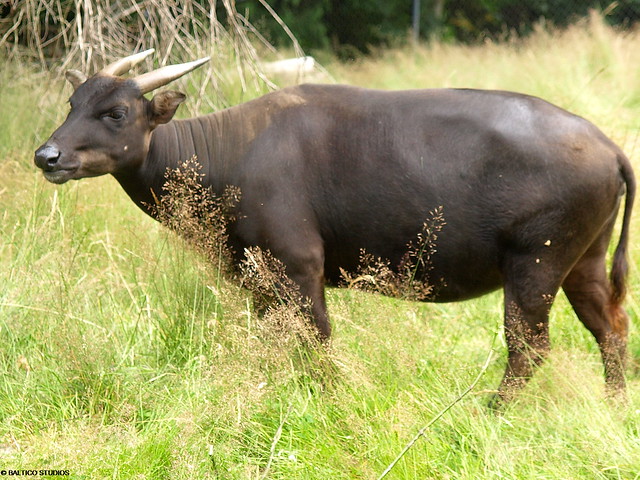HEWAN LANGKA YANG HAMPIR PUNAH DI INDONESIA - ANOA
INDONESIAN PROTECT ANIMAL - ANOA

Anoa come in two types, the lowland anoa (Bubalus depressicornis), and the mountain
anoa (Bubalus quarlesi). The anoa is a
species of pigmy buffalo, and they are the smallest of the wild cattle. Both
species are currently listed as endangered, being threatened by clearing of the
forests where they live and being hunted for their meat, horns, and hides.

Interesting Fact: Little is known about the habits of the anoa as they are one of the least-studied of all endangered species.

Anoa are only found on the island of Sulawesi in Indonesia. The lowland anoa is found in swampy forests, and the mountain anoa is found in higher-altitude forests. Unlike most cattle, anoas don’t live in herds but, rather, live solitary or in pairs and only will meet in groups when a female anoa is about to give birth. They are active most often in the morning and evening when it is still relatively cool, and they rest in the shade when the temperature rises in the afternoon. They will also bathe in mud or water to keep cool.

The lowland anoa most closely resembles a tiny water buffalo. They usually don’t grow more than 30 inches (76 cm) at the shoulder and can weigh up to 660 pounds (300 kg). When they are young, they are covered with thick, light brown wooly hair, which thins as they grow older and becomes much darker. They have dark brown to black skin that can be easily seen through their hair. There are white marks on their heads and legs, and there is often a crescent-shaped area of white on the throat area. They also have horns, both males and females, that grow out of their foreheads and point straight back, growing to reach lengths of 15 inches (38 cm). Mountain anoas have essentially the same appearance, but they keep their wooly coats through adulthood, and their horns are somewhat smaller. They also are a more solid color without the throat and leg markings that the lowland anoas have.

Anoas are grazers, eating mostly grasses, saplings,
ferns, and fallen fruit. They also appear to get additional minerals that they
need by drinking sea water. Relatively passive and shy animals, Anoas will,
however, attack violently if cornered or threatened, disemboweling their
enemies with their sharp, pointed horns, and they seem to be especially violent
towards humans.

The anoa reach sexual maturity at about two to three
years of age and will mate and give birth once a year. There doesn’t appear to
be an obvious breeding season. After a gestational period of about 275-315
days, the mother will give birth to one baby, and very seldom will birth two.
The young anoas are weaned after six to nine months, and they are reported to
live approximately 15-20 years in the wild.


Since so much is unknown about the anoa, experts are still unsure whether the males are territorial or not. Males have been seen marking trees with their horns and scratching the soil after they urinate. No one is sure if they are marking their territories or just showing aggression.
0 Response to "HEWAN LANGKA YANG HAMPIR PUNAH DI INDONESIA - ANOA"
Post a Comment